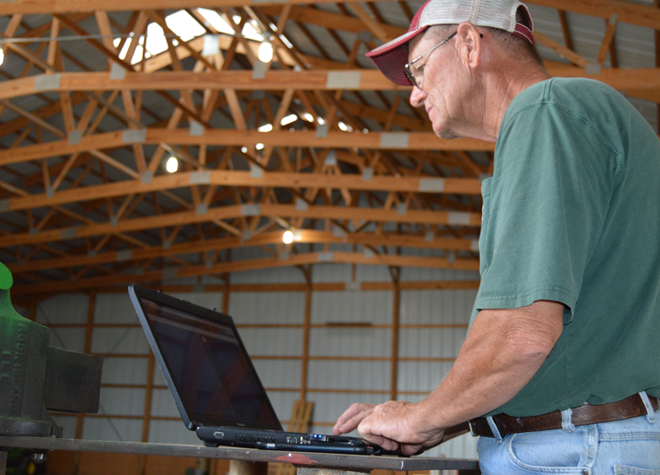Thrive in Volatile Times – The Secret to Success in AgTech
January 17, 2017

Farmers today are under increasing pressure to produce higher yields, while soft commodity prices are forcing them to lower costs.
In order to achieve this, farmers need a software platform that helps them leverage their farm data into timely decisions that save money and maximize profits on the farm. This is especially important as growers move toward more and more precision ag practices on their farms. For precision management to work, farmers need to be able to view recommendations from their trusted advisors 24/7, and make quick adjustments when necessary. They will also find themselves referring to historical application records and tracking fleet locations with status updates. This kind of real-time management is needed to give farmers the power to make smarter data-driven decisions.
Compounding this trend are the growing number of hurdles farmers are facing when it comes to technology integration. When they mix precision ag hardware and software with third-party vendors, the results can lead to lost time due to data re-entry, USB data transfer or multiple support entities.
Given that many farmers today are evaluating various data platforms in search of the most efficient, comprehensive and easy-to-use solution for their farm, we came up with a 4-Step Ag Software Checklist we hope will help growers focus in on the key attributes needed to lay the groundwork for success.
Here’s what to look for in a farm data software platform:
1. Seamless Integration Between Hardware, Software and Services
One of the greatest challenges facing farmers today is getting their hardware and software to work together and, ideally, generate ROI. With multiple manufacturers and competing support teams involved, technology integration can become a significant drain on time and resources.
By accessing hardware and software from the same company, support and integration becomes seamless and the farmer can concentrate on running a successful business.
One option on the market, Trimble’s total farm management system — which integrates data from most types of equipment, farm practices, crop types, and over various computing devices (guidance displays, desktop computers, smartphones) — facilitates collaboration between farmers and the partners they interact with every day.
To address this issue, Trimble has integrated multiple technologies — hardware, software and mobile devices — to enable its customers to succeed.
2. Farm Data Management Tool That Enables Precision Ag
Most of the new equipment farmers are buying today comes equipped with variable rate technology (VRT) and other features needed to implement precision ag. The challenge is that without the software to measure, manage and adjust these recommendations in real time, VRT equipment often remains idle as growers over-apply in some areas of the field and under-apply in others.
“Successful farmers know that precision ag is the key to the future, but many are waiting around for the technology to catch up,” says Benjamin Allen, Trimble Ag Software business lead. “We’ve created a farm data management tool that helps farmers work with their agronomist or crop advisor to implement, manage and measure the kind of precision management strategies that will soon become a normal part of doing business on the farm.”
3. Mobile Capabilities Second to None in Today’s Ag Sector
Farmers today need one software platform that enables accounting, mapping, agronomic tools, fleet management, weather tracking, employee management tools, imagery, inventory, budgeting and more — all from a smartphone or tablet.
“Our customers need to check on important field applications and equipment performance every day,” says Bob Wold, software engineering manager for Trimble Agriculture. “We have enabled our end-to-end solution for both Android and Apple iOS devices in order to support our customers and their mobile work environments. We believe this focus on mobile device support is unique and powerful, and we aim to continue to provide the best mobile experience in the market.”
4. Software That Supports Food Traceability Trend
In response to increasing demand among today’s consumers to better understand how their food is produced, key players across the agriculture sector are ramping up efforts to track ingredients all the way up the food chain. To appeal to consumers, food retailers are pushing their suppliers to provide traceability-branded items. In turn, food processors are requiring more data from growers that documents how the crop was grown.
As this papertrail becomes a regular cost of doing business, farmers are turning to comprehensive, reliable, mobile-friendly farm data management platforms that generate the required documentation without the headaches.
Ag software must provide access to food traceability and quality inspection solutions throughout the fresh food supply chain. These tools enable food producers, distributors and retailers to meet food safety requirements, secure their supply chain and optimize product freshness and quality.
